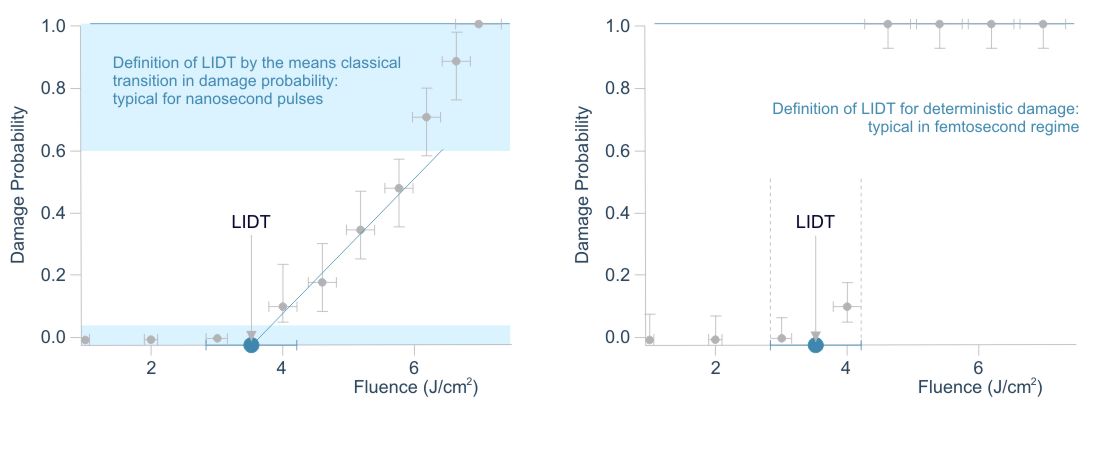Laser Induced Damage Threshold – LIDT
Laser Induced Damage Threshold (LIDT) is a physical characteristic of optical component which defines a critical laser irradiation level (either peak irradiance, peak peak fluence or peak linear power density) causing irreversible changes in materials structure.
There exist several (application dependent) interpretations of this definition.
Functional definition:
Functional Damage Threshold is the laser irradiation level, where optic can operate without observable changes within its specified optical properties (for example reflectance, transmittance or wavefront).
International standard ISO 21254-1, 2, 3 and 4 definition:
Laser-induced damage threshold is the highest quantity of laser radiation incident upon the optical component for which the extrapolated probability of damage is zero where the quantity of laser radiation may be expressed in energy density, power density or linear power density. LIDT is often confused with Ablation Threshold (interpreted as a laser melting or evaporation point) which is not the same.

Q: If I am very close to the damage threshold but below it is it safe for my optics?
A: It is not recommended to operate very close to the damage threshold since it depends on many things. Depending on material, wavelength, rep. rate, environmental properties, coating type, homogeneity and other factors related to space or time LIDT may change in time or have accidental defects. Use operating fluence preferably below 50% of the damage threshold.



